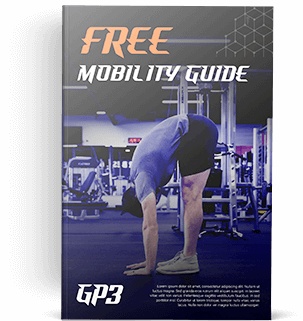Key Points:
1. Sports primarily measure skill, athleticism, and strategy.
2. The amount of each varies dramatically from sport to sport.
3. Differences in opinion about which of these three categories is most valuable (and identities built around that) often account for the surprisingly heated discussions about which sport or athlete is “best.”
Estimated reading time: 6-12 minutes
Did I get you with the clickbait title? Sorry about that! I’ll explain myself, I promise. And we can get this out of the way now. Yes, baseball is a sport.
Anyway, talking about sports the last two weeks has inspired me to finally put my thoughts on paper regarding a subject I’ve discussed with many people over the years.
It’s a lens through which I view all sports, and I call it the “Skill/Athleticism Continuum.”
Fancy, huh?
Basically, it’s a framework that allows us to examine and understand the differing demands of various sports. It also helps us answer the age-old question…
Is “X” even a sport?
Here are some activities often subjected to this debate.
Bowling, pool, NASCAR, poker, chess, even Fortnite…The list goes on. I barely scratched the surface.
Almost inevitably, what determines whether or not someone perceives “X” as a sport is whether or not they personally enjoy it. To that end, here’s a good way to start an argument. Suggest to a golf fan that maybe it’s not “as much of a sport” as a less popular but more cardiovascularly demanding one, like volleyball or tennis.
Hurt feelings will make themselves apparent quite quickly. So, don’t actually do this unless you’re trying to be a jerk.
Anyway, I personally find the “Is X a sport” debate to be fairly uninteresting. This isn’t to say I didn’t argue about it in my younger days. This article’s clickbait title was inspired by lines of thinking I used to engage with while resenting the baseball players who mocked soccer as a “sissy sport,” when I was in high school.
They often used more…colorful language, but that’s not important. I used to reason, “In that ‘sport,’ you spend nearly half the game literally standing around doing nothing. Heck, many pro players would even be considered ‘obese.’ Unless you’re the pitcher, you don’t do anything for 90% of the game!”
Now I’ve matured and I don’t really care. But, “What makes a sport a sport?” can still be worth examining.
The actual definition of a sport
No less an authority than the Oxford Dictionary defines “sport” as, “an activity involving physical exertion and skill in which an individual or team competes against another or others for entertainment.”
That’s pretty broad.
To a degree, all of the above examples would fit within that definition. Even chess. Stanford neuroscience researcher Ropert Sapolsky found that grandmasters can burn around 6,000 calories on tournament days! Yes, that’s largely from mental exertion, but that level of output certainly takes a physical toll.
I also think it’s totally fine to call NASCAR and other similar races “motorsports,” and nobody seems to have much of a problem with gaming competitions being branded as “esports.”
So, like I said, I don’t really care anymore. I’m going to channel my inner philosopher and say that any line drawn between “sport” and “not a sport” is largely arbitrary anyway.
Here’s what I do find interesting, however.
We’re finally going to talk about the continuum I proposed above.
Sports largely allow for the expression of two key components:
- Athleticism
- Specialized Skill
I’m probably missing out by not also including a third category, “Strategy and Tactics,” but because that applies to pretty much any competitive game, it’s going to be outside the scope of this piece. This also means chess probably leans too heavily on this third component for me to discuss it any further. What would we call chess’s subcategory, anyway? Board game? Mental sport? Whatever. That’s not important right now.
Aside from an initial example to highlight the opposing ends of each continuum, we’ll mostly be discussing “ball sports,” where one team or player is attempting to somehow deposit some kind of object to some kind of area in their opponent’s territory while trying to prevent said opponent from doing the same.
This means we won’t be discussing figure skating, gymnastics, dance, cheerleading, or any competition determined by a judge’s score. These activities undoubtedly require massive amounts of athleticism and specialized skill, but the lack of any direct interaction with opponents means they’re slightly different, as does the way in which points are scored.
As a final note, here are the categories I’m including under athleticism:
- Speed
- Strength
- Power (strength applied at speed; also known as explosiveness)
- Endurance
- Mobility/Flexibility/Range of Motion
Two ends of the spectrum
At the “Mostly Skill” end sits darts. Is it a sport? Again, who cares? It’s certainly a competition involving skill and at least a mild amount of physical exertion. But the main thing it’s measuring is demonstrating consistency of the highly specialized skill of throwing a sharp, pointy object into a small area.
You don’t need to be able to run fast, jump high, or produce a ton of force. An untrained novice should be strong enough to throw the roughly 1 ounce dart less than the 10 feet between the board and the “oche” or throw line. By the way, I learned that word through researching this piece. Email me if you already knew it. I’ll be impressed!
On the opposite, “Mostly Athleticism” end we can find certain short-duration Track & Field events, like the 100 meter dash or shot put. Yes, running properly and throwing a shot are absolutely skills. However, what determines the winner is largely the difference in their ability to sustain proper technique throughout the event, which requires great strength and power. Doing this successfully is expressed as pure speed or strength. Plus, if you took two equally skilled runners or shot putters and controlled for every variable except strength, the stronger one would win.
So, we’re going to label track and field events as pure athleticism.
Ball sports and the spectrum
I view football and baseball as representing the opposite poles of this spectrum.
Football requires tremendous levels of athleticism, but lower levels of specialized skill. The sport itself even acknowledges this in that it labels some roles as “skill positions.” In fact, a couple of the positions that require the most specialized of football skills, like kicker, punter, holder, and long snapper, aren’t considered skill positions. Players in these roles don’t often tend to be household names, and are more likely to be remembered for the times they make mistakes. Rough life! The primary activities of football, namely running, throwing, and catching, are certainly skills, but not quite to the degree of the ones we’ll discuss shortly.
Take baseball, for example. The ball is just under 3 inches in diameter, and travels the 60.5 feet from the pitcher’s mound to home plate in less than 0.5 seconds. And that’s if thrown by a professional pitcher with average velocity. To see and judge the ball’s trajectory, then have enough time to swing the bat where the ball will be and actually make solid contact…all in under 0.5 seconds? That’s a skill. Inevitable subjectivity aside, it’s probably a harder skill than catching a football. There’s a reason getting a hit a mere 35% of the time puts you in elite, all-time great company. It’s that difficult to do.
By contrast, a quarterback who only completed 35% of their passes or a wide receiver who only caught 35% of the balls tossed their way would not likely enjoy a long career in the NFL.
Now, let’s look at the athleticism side.
Football requires tremendous strength, speed, and power at every position. Then it requires the endurance to repeat these feats. There is no play during a football game where speed and exertion aren’t through the roof.
In baseball, on the other hand, doubleheaders exist. In no other professional sport would it be possible to play two games literally back to back on the same day. The demands on the body are too high. Now, you definitely need strength to play baseball. Pitchers require ridiculous levels of shoulder mobility and upper body endurance as well. You also need to be relatively quick to beat a throw to first base. But, the athleticism required is nowhere near the level of football.
So, in my opinion at least, these two pastimes represent opposite ends of the Skill/Athleticism Continuum for ball sports.
The wonderful sports that require both
I’ve always been drawn to sports that require high degrees of both skill and athleticism. Prime examples here are soccer, basketball, hockey, and lacrosse. With these sports, not only do you need all five of the athleticism components we discussed, you need to develop a highly specialized skill simply to move the ball. Let me clarify that last part a bit.
When you play touch football for the first time, you know what to do when you receive the ball. Just hold it, run, and don’t let anyone touch you. Even if you’re playing quarterback, you generally have an idea of how to be successful. You want to avoid getting hit and try to throw the ball in the general direction of an open teammate. To be sure, developing the touch, accuracy, and arm strength necessary to be a good quarterback will take a ton of time and effort.
But, compare how you move the ball in football to dribbling in soccer or basketball, stickhandling in hockey, or cradling in lacrosse. The first time you try these, you’re going to feel clumsy, uncoordinated, and awkward…because that’s exactly what you’ll be! These are highly specialized skills that take many hours to master, and in these sports, they’re a prerequisite for even touching the ball. This doesn’t even take into account the further skills one needs to develop for various types of passes and shots.
In my admittedly biased opinion, soccer takes this a step further because it’s the only major sport in which skill is expressed through the feet rather than the hands. By learning to write, brush your teeth, and use eating utensils, you develop some degree of hand-eye coordination that will help when learning the skills of other sports. With soccer, there’s no substitute for foot-eye coordination.
Anyway, one of the wonderful things about these games is their potential for creativity. Basketball has often been likened to jazz, and some of the dribbling skills on display when talented soccer players have a ball at their feet are simply mesmerizing. Watch Neymar or Chris Paul when they’re in full flow, and they look like artists. It doesn’t even look fair to their opponents.
Interestingly, you can also have success in these sports by being merely above average on the athleticism side and excellent on the skill side, or vice versa. This opens these games up to a wider range of participants and allows for dramatically differing play styles.
And you know what? I think that’s pretty cool
That’s really it, this week. No deeper, philosophical point or major takeaway for your life. At a stretch, maybe it’s to examine which type of games you find yourself more drawn to and keep that in mind if you’re ever in an argument. Do you prefer the more cerebral ones, pure athleticism-focused ones, those that require highly specialized skill, or some combination?
Any option is fine! Sometimes, just like with writing a weekly blog, it’s simply about knowing what you like.
Before you go, I’d love to hear from you! What’s your favorite sport? Why do you enjoy it more than others? Reply to this email and let me know!

